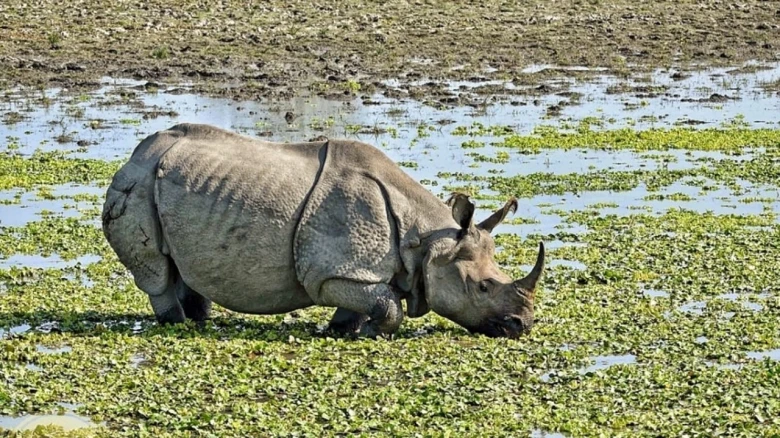The carcass was found a week ago on March 23, and the department looked into several possibilities right away......
Digital desk: The forest department has suspended a forest officer who was assigned to the Budhapahar range for "negligence on duty."
This disciplinary measure comes in response to the finding of a rhino carcass within the range, found close to the Tunikati forest camp, with its horns intact.
Iqbal Hussain, a forest officer assigned to the Burapahar Range in the National Park area, was discovered to have been involved in the occurrence throughout the investigation into the circumstances surrounding the death of this endangered species.
The carcass was found a week ago on March 23, and the department looked into several possibilities right away.
Reports at first suspected poaching may have occurred, but a later department indicated that "infighting" was the cause of death. An elderly male rhino beneath the Burapahar Range suffered a fatal brain injury as a result of infighting, according to a social media post. The horn portion and nasal bone were undamaged.
Notably, in the last two months, the largest national park in the Northeast has seen three rhino deaths. It is interesting to note that all three of the deaths' official reports list natural causes.
Earlier, on March 17, officials at Kaziranga National Park discovered a dead rhinoceros near the riverbanks of Gai Tapu.
Local workers saw the carcass and reported it to the park officials right away.
The officials told the media later, following a thorough post-mortem study, that the rhino had died of natural causes. Since the rhino horn was intact, officials ruled out poaching as a cause of death.
Similar events happened in February of last year when forest officers in the Kohora area of Kaziranga, not far from Mona Beel, discovered another carcass, this time that of an adult rhino. Forest officials speculated at the time that the intact horn referred to a tiger kill as the most likely cause of death.

Leave A Comment